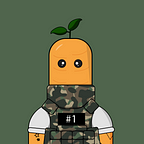Traditional firms have top-down organizational structures, with the CEO at the top, senior management, mid-level management, and staff at the bottom of the pyramid. This is a distinct hierarchical structure, and as we progress to the top, the organization’s control becomes more centralized. A Decentralized Autonomous Organization (DAO) is an organization in which all administrative operations are managed by a computer program. Any new decisions are put to a vote by the community, and the program is modified based on the results. Simply said, a DAO is in charge of a huge sum of money, and its members submit recommendations on how that money should be spent, which they then vote on. The only difference between a DAO and a typical company is that all processes are automated. Most crypto-native firms use a DAO as their governance structure. Because of their simplicity, DAOs are being utilized to address governance concerns in a variety of online communities.
The DAO is managed by a collection of Smart Contracts. Smart contracts are programmable agreements that are automatically performed and manage how two or more parties interact with each other based on specified criteria. This automates procedures that would otherwise require human intervention. Because smart contracts are immutable once they are on the blockchain, any modifications must be approved by the community.
Governance Tokens
Changes are made in a DAO by member proposals, which allows every member to have a voice. Proposals are made, and the community has a set time to vote on them before they are enacted. Allowing community voting democratizes the traditional company structure.
DAOs can be made up of developers, investors, businesses, charities, and local projects. Almost any current organizational form may be reinvented in this way. DAOs utilize permissionless governance tokens. This means that everyone who holds a DAOs token is instantly a member of the DAO that issued it. However, some DAOs are private, and their tokens are not for sale. DAOs might issue their tokens in exchange for liquidity or provide network security for a Proof of Stake consensus mechanism.
Governance tokens are held by its members, which they use to vote on proposals or upgrades suggested by the community. The governance tokens give members control of the decision-making of the DA. It can also allow them to share in any profits encouraging responsible decision making by its members as they have an invested interest in its success.
Purpose of a DAO
The world is increasingly becoming smaller with the rise of the internet. Across many platforms, like-minded individuals are attempting to build future industries. Managing a large amount of capital and establishing trust over the internet is complicated. The DAO is a perfect solution for this as it is public, giving everyone the ability to read and verify the code that governs the organization.
When code runs an organization, it eliminates the chance of human mistakes and central leadership corruption. The DAO guarantees that the organization’s primary focus is always on helping the entire community rather than a smaller governing group.
How it theoretically works
Charities do a lot for people when their funds are allocated responsibly; cases of senior members of charities self-dealing are common, using its funds to pay for their private expenses.
Now let us imagine a charity being converted into a DAO. The construction of the DAO would eliminate the purpose of management and conflict of interest; by being open-source anyone can verify that the charity is doing what they are expected to do with its funds.
Its members can propose to build a new playground in the city, and they then vote on it. Usually, 1 token equals 1 vote, this could create a situation where the one with the most money makes the rules. The voting rules can be adjusted by the community to level the playing field by limiting the number of votes any member can have, ensuring that the richest members cannot control the DAO.
When the DAO votes on proposals to fund a community project, the funds could be automatically dispursed to the needed companies to complete the decided project. All of the funds the Charity DAO has under control can only be spent if members agree it should be.
Advantages
- They cannot be shut down.
- It is open-source, and the community can fix the code.
- Fully decentralized and does not allow for powerplays between members.
- Members need to vote for any changes giving the community a voice.
- Implementation of goals happens automatically.
- Organizational procedures are all transparent.
- Proposals are well constructed; because it is costly to make proposals in a DAO. Improving the quality of ideas being presented.
Disadvantages
- Because there is no central authority, decision-making takes longer.
- Disagreements inside the community have the potential to split the organization.
- As a result, the structure of some DAOs is similar to traditional organizations, with the community member with the most tokens having the most votes.
- Tokens could be considered securities, leading to legal issues.
- Because the code is public, it is vulnerable to attacks.
- There are no business secrets within DAO because everything is public information.
Conclusion
Despite years of centralized control, the internet is allowing us to bypass traditional hierarchies. In the end, a DAO is managed exclusively by its members, who make crucial choices regarding the project’s future based on how much money they control.
DAOs are gaining traction as the natural regulatory framework for online collaborators, particularly crypto-native organizations. Offline businesses want to benefit by removing their centralized control system too, so they have been investing in understanding DAOs. This might not be the future, but it is an option.
Stay Connected!!
